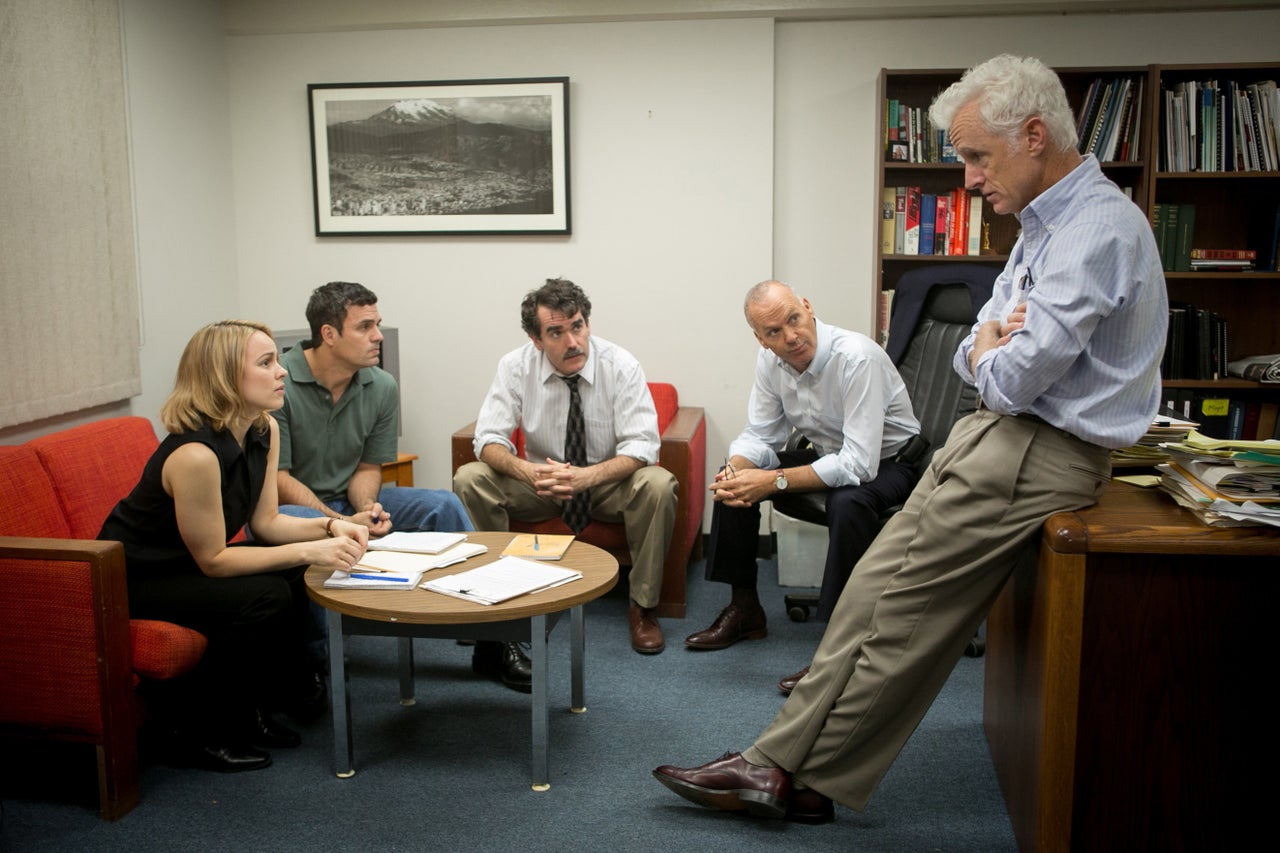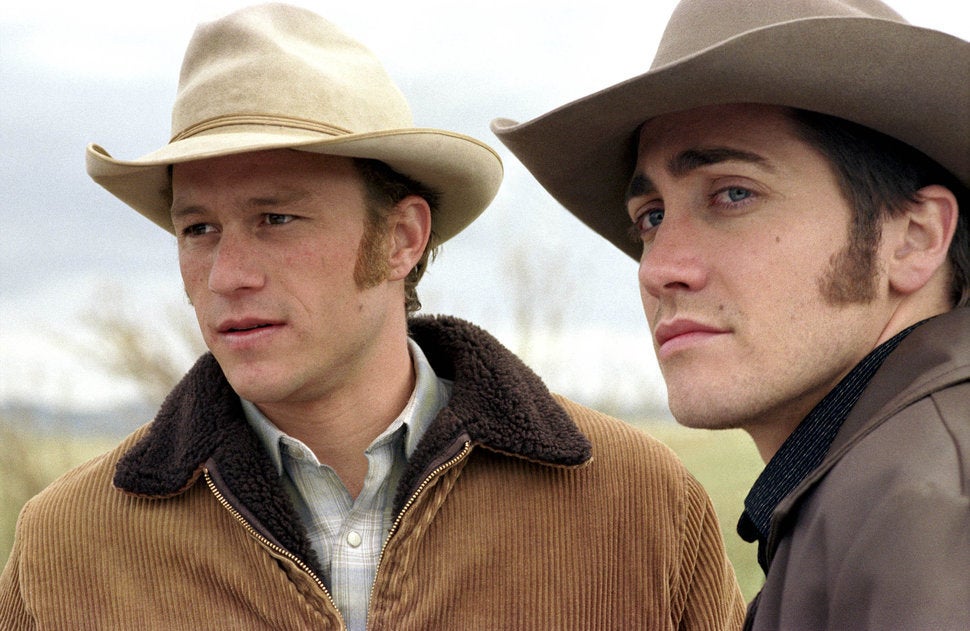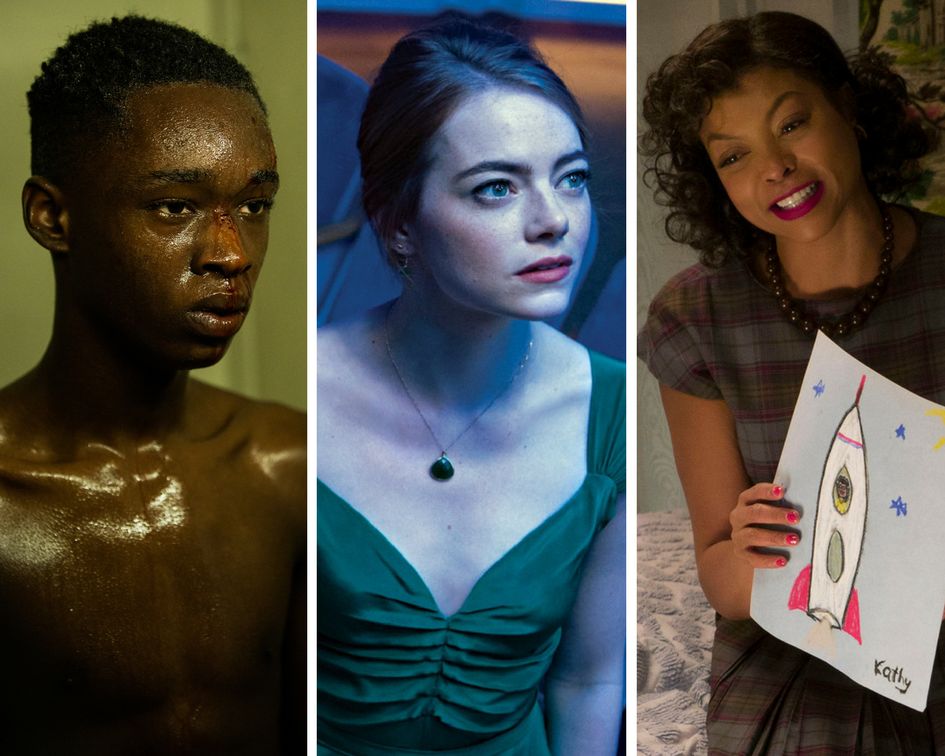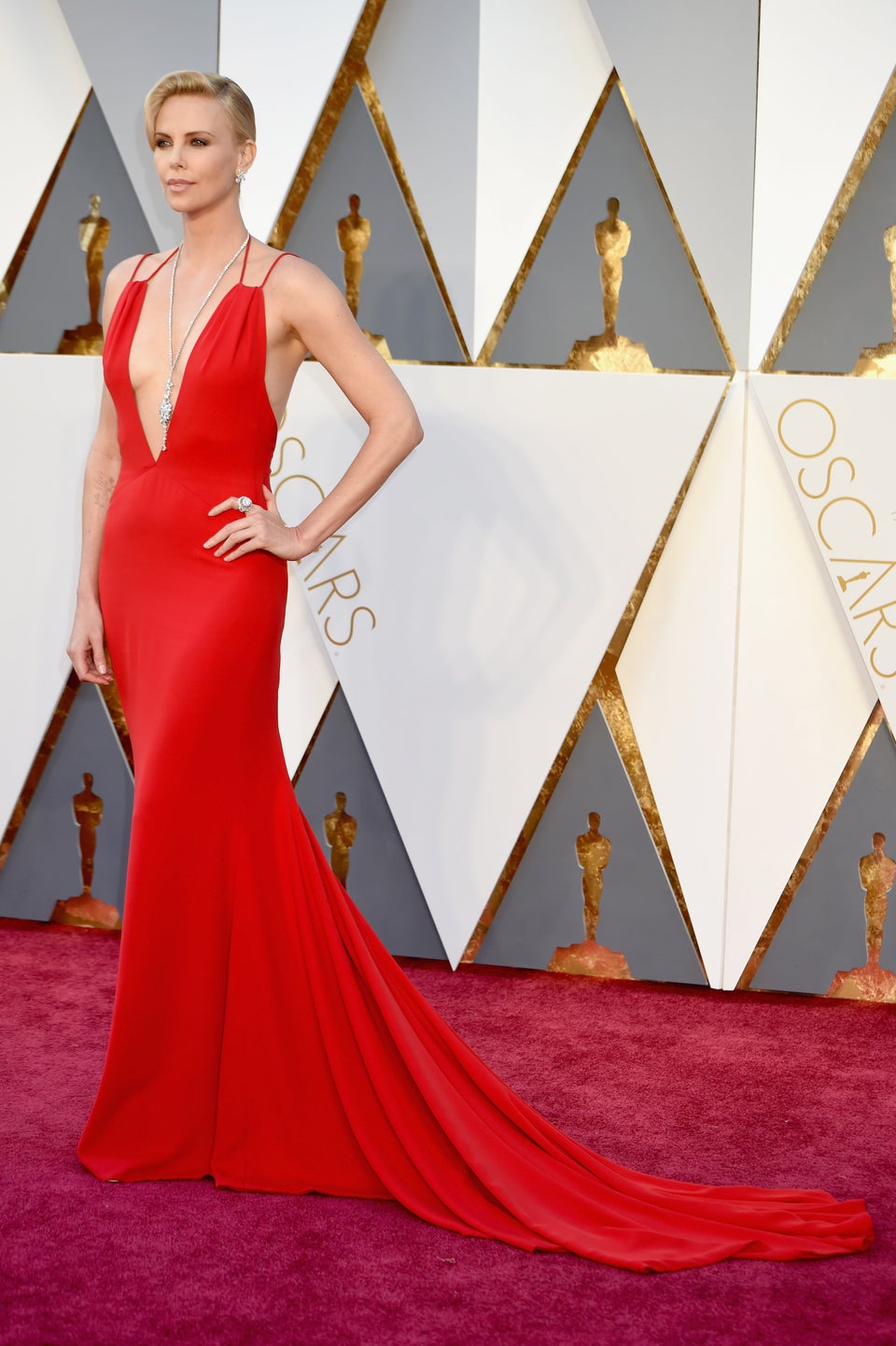Sunday’s Oscars loom in the shadow of Donald Trump’s fledgling presidency. As with every awards show this year, we can expect copious equal-rights diatribes mounted in resistance to the regressive legislation and callow disregard for tradition that has defined the Trump administration’s debut.
But before arriving at the annual ritual, we will have already seen one of the most politically driven Best Picture debates unfurl in the media. This time, it’s personal.
Perhaps more than ever, the Best Picture contest seems to double as a referendum on our culture’s conscience. It’s bigger than the Oscars, just as Beyoncé losing Album of the Year to Adele was bigger than the Grammys. If movies are statements about the world around us, then one purpose of the Academy Awards is to adjudicate the year’s best cinematic manifestos. That’s complicated when titles from Obama’s America are being feted in Trump’s America.
It’s especially complicated when considering the Oscars’ thorny political backdrop. Throughout its 89-year history, the event has, after all, become a shrine to Hollywood’s liberal values ― even when the movies themselves aren’t explicitly political.
In 2014, “12 Years a Slave” director Steve McQueen ended his Best Picture acceptance speech by dedicating the award “to all the people who have endured slavery and the 21 million people who still suffer slavery today.” He then turned to the cast and crew surrounding him onstage and leapt into the air enthusiastically.
In 2016, “Spotlight” producer Michael Sugar addressed his Best Picture acceptance speech to Pope Francis, saying he hopes the recognition will inspire “a choir that will resonate all the way to the Vatican.” He then turned and gave Michael Keaton a bear hug.
In both cases, it would have been surprising not to hear rallying cries related to the human-rights transgressions depicted in these films.

Sandwiched between the “12 Years a Slave” and “Spotlight” victories was “Birdman.” The closest that movie came to tackling social ills was something along the lines of “middle age = hard.” Yet director Alejandro González Iñárritu, a Mexico native, politicized his acceptance speech anyway, ending with a sweet pro-immigration sentiment.
This all took place during Barack Obama’s tenure. In terms of Hollywood’s nerve center, it was a time of relative political ease.
But amid radical unrest, what does it mean to score popular culture’s most luminous prize?
If there’s one thing we know about the Oscars, it’s this: Even by subjective standards, the year’s best movie often doesn’t nab Best Picture. “The Greatest Show on Earth” beat “Singin’ in the Rain” because “Singin’ in the Rain” wasn’t even nominated. “How Green Was My Valley” topped “Citizen Kane,” frequently cited as the greatest film ever made. “Out of Africa” outpaced “The Color Purple.” “Dances with Wolves” stole the trophy from “Goodfellas.” Perhaps most infamously, voters preferred “Crash” over “Brokeback Mountain,” a groundbreaking masterpiece if we’ve ever seen one. Some would add “Birdman” to the list of failures, too ― it did compete against “Boyhood” and “Selma.”

Understanding that the minutiae of a Best Picture race has little to do with pure quality, any Oscar pundit will tell you this year’s front-runner is “La La Land,” a bubbly musical romance about an aspiring Los Angeles actress and a stubborn jazz purist. “Moonlight,” one of 2016’s most acclaimed releases, could unseat “La La Land” in an underdog triumph, partly because it’s a phenomenal movie and partly because of the important story it tells, about a black latchkey kid grappling with his sexuality in the Miami projects. But watch out for “Hidden Figures,” the charming box-office smash about three black women who were pivotal at NASA in the 1960s. “Hidden Figures” became a veritable threat to the “La La”-”Moonlight” two-hander when it won the Screen Actors Guild Awards’ top prize, a coveted Best Picture pacesetter.
(Apologies to the other six nominees: “Arrival,” “Fences,” “Hacksaw Ridge,” “Hell or High Water,” “Lion” and “Manchester by the Sea.” Thanks for playing.)
During awards season, that bastion of expensive politicking, offscreen narratives supersede art. This year’s narrative goes like this: “La La Land” is the escapist swoon needed to distract from Trump’s horror show, “Moonlight” is a socially vital tale not seen often enough, and “Hidden Figures” is a healthy blend of escapism and import.
Put another way, some journalists and Twitter objectors accuse “La La Land” of being a mansplain-y letdown with subpar dancers and a misguided homage to old-school musicals. They argue it’s simply not the movie Trump’s America needs, at least not when competing against stories about the very sorts of people our government would rather marginalize. The objectors’ objectors call them killjoys who fail to appreciate Damien Chazelle’s colorful flourishes and bittersweet enchantment. These arguments have occurred in countless think pieces since the moment “La La Land” opened. The New York Times’ arts writers, for instance, chimed in one by one on the musical’s merits, and lack thereof, last week.
Such political undercurrents offer a narrow, though not necessarily unfair, rubric for an awards show long granted an inflated premium within our pop-culture landscape. But if politics haunt the Oscars, shouldn’t the recipients reflect the moment’s political mood?
Maybe. History shows that honoring exemplary art has always been a mere slice of the Oscar pie.
When a coterie of Hollywood bigwigs created the Academy Awards, first held in 1929, they intended to harmonize the ballooning industry, which was facing labor disputes and struggling in the transition from silents to talkies. Within two years, subtle lobbying had started, with studios purchasing ads in trade magazines touting their candidates. In 1953, television broadcasts began, further romanticizing the event. As the years progressed, offscreen solicitations swelled. In 1979, the major studios reportedly spent a collective $1.8 million on Oscar campaigns. Two decades later, Miramax dropped an estimated $5 million on its successful “Shakespeare in Love” crusade alone. By that point, one has to wonder how much a movie’s quality even matters.

Mudslinging, strategic film-festival debuts, baby-kissing industry events and an endless parade of media appearances have become part and parcel of the months-long Oscar season, ultimately defining the derby in tandem with an onslaught of predictive precursor prizes and lingering mythology about who is “overdue” for a win. (See: Leonardo DiCaprio’s “Revenant” sweep.) The nearly 7,000-member Academy of Motion Picture Arts and Sciences is a persuadable, navel-gazing hive mind that, despite recent diversity initiatives, remains dominated by older white men ― the very group that decided “Crash” better reflects its values than “Brokeback Mountain.”
It can’t be over-emphasized: No matter how many A-listers wax poetic about the power of great art on Oscar night, the Oscars are never really about great art, not exclusively at least.
Which is why a Trump-era victory for “Moonlight” or “Hidden Figures” would be more significant than any other socially relevant winner from the past, including Obama-era champs “Spotlight” and “12 Years a Slave.” Following two consecutive years without any acting nominees of color, we’re blessed with one of the most diverse Oscar rosters in history. Why, some ask, would voters select “La La Land,” in which a white dude mouths off about the death of jazz, an art form historically associated with African-Americans?

Because it’s about Hollywood, of course. A Best Picture selection exemplifies the way the Academy wants to portray itself. In picking “La La Land,” the electorate advances the notion that movies are the dream ballets to which we all aspire. In opting for “Moonlight,” the Academy can confirm that art is inherently political, and that “Moonlight” is the film America needs to see now. “Hidden Figures,” again, combines the two value systems.
In every sense, there’s room for both styles of movies. Cinema does provide an escapism that has become woven into the fabric of our culture, and that’s perfectly fine. It also tackles hot-button issues in ways that shape how we see the world around us. There’s a reason Vietnam War epics “The Deer Hunter” and “Apocalypse Now” ― both Oscar winners ― were such important works in the 1970s, for example.
As mass media has mushroomed throughout the Oscars’ history, so has our treatment of the Academy as a cultural figurehead. It means something ― it means a lot, in fact ― that so few filmmakers of color have been nominated, or that the Oscars have spotty credentials when it comes to stories about queer subjects. If these awards are America’s gold standard, people of all backgrounds deserve an invitation.
But no matter the political jeremiads that flank Oscar night, the compulsion to gauge nominees based on the White House’s affairs has never been this frank. Just look at the past decade. Analyses of 2010’s campaigns indicated “The Hurt Locker” bested sci-fi behemoth “Avatar” because it staged a fierce dark-horse coup, not because it tackled the then-ongoing Iraq War. 2011’s titleholder, “The King’s Speech,” a typical Hollywood period piece, is one of the more divisive Best Picture upsets, largely because the moral ambiguity and topical timeliness of “The Social Network” made for a more progressive filmmaking style. Many chalk up the next two choices ― “The Artist” (over, say, “The Tree of Life”) and “Argo” (over “Lincoln”) ― as evidence of Hollywood’s love affair with itself.

These competing codes ― potent campaigns, forward-thinking filmmaking, masturbatory interests ― create a hodgepodge of Best Picture history that hasn’t prepared us to agree that Trump’s election should determine the winner. It is only within the Oscars’ limited scope that “La La Land” and “Moonlight” ― movies with little in common ― are pitted against each other. And that’s where it helps to realize the Oscars create more phony narratives about popular culture than perhaps any other institution. Suddenly, you’re either a “Moonlight” fan or a “La La Land” fan, creating a false choice between supporting inclusivity or encouraging the same old Hollywood frolics.
But if there’s one consistent message the Academy sends, it’s that a Best Picture winner reflects the product Hollywood is proud to have made. Knowing the economic boon such a victory can bring to a movie, the Academy seems to say, “Go see this so we can make more like it.”
For many playing along at home, that theory leads to an easy answer: We’ve seen movies like “La La Land” before, and we’ll see them again. Instead, we must fight for movies like “Hidden Figures” and, especially, “Moonlight,” which would be the second-lowest-grossing winner in history after “The Hurt Locker.”
It’s encouraging to know the Academy has proven increasingly capable of crowning films that aren’t the box-office bonanzas so cherished in a mercurial industry. Look no further than the little-seen “Birdman” conquering the lucrative “American Sniper,” or the fact that “Spotlight” was every bit as worthy as “Mad Max: Fury Road.” Despite rapacious business models, money isn’t the only form of profit. To coronate low performers is to risk seeming out of touch with common moviegoers, but the Oscars were never designed to be populist anyway.
That timeworn tug-of-war is on display again this year. The box-office success of “La La Land” and “Hidden Figures” make them far more popular, and arguably more relevant as a result. Yet despite initially positive reviews, “La La Land” does not mean to its fans what “Moonlight” means to its admirers, especially considering the latter’s smaller marketing budget. Few will leave “La La Land” thinking, “Finally, my story is being told.” And anyway, “La La” and “Hidden Figures” did not muster the volume of critical enthusiasm that “Moonlight” enjoyed.
What, then, makes one deserving of Best Picture over another? The weight of Hollywood’s future.

For a final example, let’s turn to the most glaring anecdote: In 1995, the edgy oddity “Pulp Fiction” lost to “Forrest Gump,” a box-office medalist drenched in conventional bathos. It’s an indisputable travesty, as “Pulp Fiction” is superior by every rubric except revenue. Critics knew it then, and just about everyone knows it now. Moreover, there would be ample “Forrest Gumps,” aka fables about heterosexual white men overcoming adversity in fantastical ways. Less reliable was the assumption that mainstream moviegoers in the mid-’90s would turn the next “Pulp Fiction” into a notable hit, thereby encouraging studios to invest in more like it ― and that’s a big part of why the Academy made a mistake. (Case in point: Quentin Tarantino’s next film, “Jackie Brown,” grossed one-third of what “Pulp Fiction” made domestically.) It’s not that there isn’t room for movies like “Forrest Gump.” But they do not boast the same flash-in-the-pan singularity of “Pulp Fiction,” just like “La La Land” does not carry the same dynamic originality of “Moonlight.”
At some point, the Academy has to decide for itself what the future of moviegoing must look like. What should people want to see? What should filmmakers aspire to? Dream ballets or mirrors held up to a knotty world? In other words, will voters pick more of the same or blaze a fresh frontier? With so much of the Obama administration’s progress in flux, our democracy awaits the answer.

